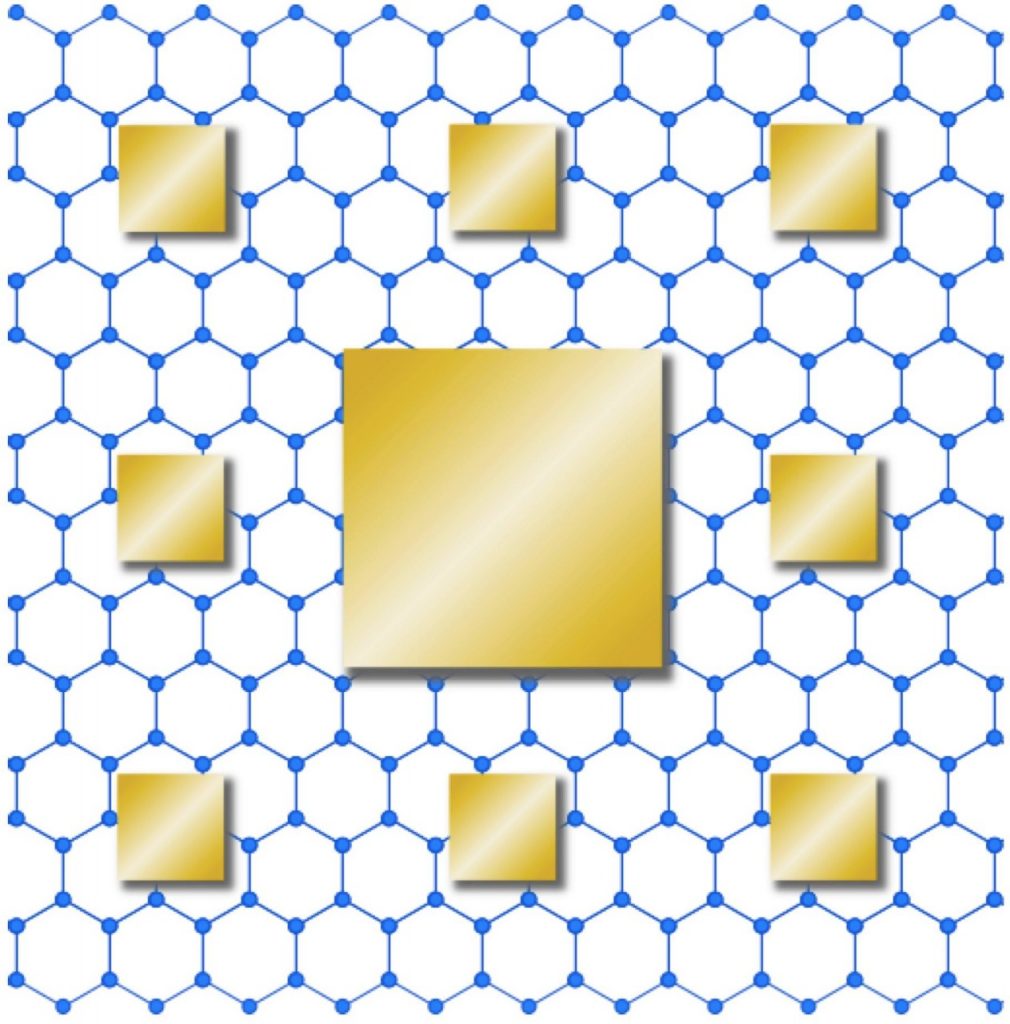2D materials are an ideal and unprecedented platform to test the behavior of charge carriers in complex structures. The 2D nature of materials like graphene, silicene, phosphorene and TMDs allows us to think in nanostructures mimicking fractal structures like the Sierpinski carpet, Sierpinski triangle, Cantor set and Koch curve to mention a few. In fact, there are some works studying the electronic, transport and optical properties in fractal geometries. In some cases physical properties manifest characteristics associated directly to the fractal structure such as the fractal dimension. In other cases the physical properties present a radical different behavior with respect to conventional structures. This new field within 2D materials is growing rapidly and several exotic and unprecedented properties are awaiting to be discovered.
In the 2DMRG, we focus on the transport properties of the Dirac electrons tunneling through complex structures. We theoretically consider complex structures created through electric and magnetic fields as well as supporting substrates, which allow us to configure a set of potential barriers spatially arranged in self-similar-like fashion. We have mimicked the Cantor set using graphene. Our main results are that the transmittance and conductance spectra manifest self-similar characteristics. In addition, we quantify numerically the self-similar patterns with well-defined scaling rules that reproduce this self-similar behavior at different scales. According to our research, it is paramount to break some symmetry of the system to unveil the self-similar transport. For example,

when graphene is placed on nanostructured substrates the sublattice symmetry is broken.
In the case of ferromagnetic strips, the breaking symmetry associated with the magnetic field is the time-reversal symmetry. We consider that the so-called self-similar quantum transport can be regarded as another exotic effect in graphene like Klein tunneling, atomic collapse, negative refraction etc.
Finally, we are extending our study of complex structures to the case of thermoelectric properties, spin-valley polarization and magnetoresistance, where we expect that these properties reflect in some way the characteristics of the self-similar structure and/or present a radical different behavior with respect to regular-conventional structures.